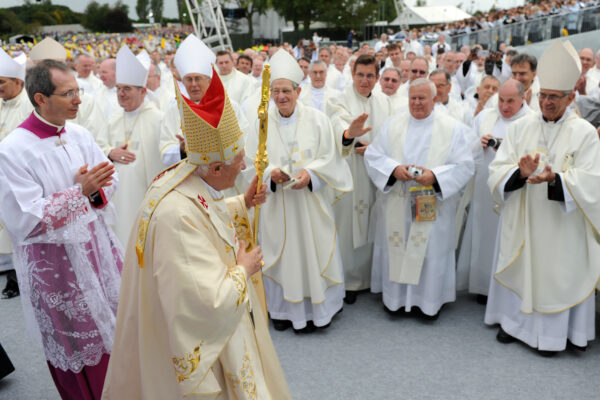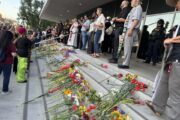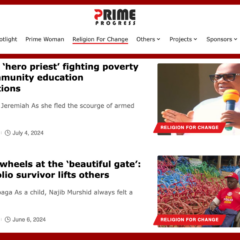This post originally appeared on Trans-Missions, the USC Knight Chair in Media and Religion site.
Many theologians, reporters and devout Catholics uttered a collective “whaaat?!?” when the Holy See announced that condoms could be used in a morally responsible way to help stop the spread of HIV. There is probably no more appropriate day than December 1, World AIDS Day, for journalists and commentators to spend some time understanding what’s behind the Pope’s statement.
Within certain limits, most religious traditions allow for dynamic processes that create, refresh and renew core elements of belief over time. The Roman Catholic Church is no exception.
David Gibson of the New York Times adeptly situates the Pope’s decision on condom use within a Catholic intellectual lineage that is centuries old. “By allowing for exceptions for condom use,” Gibson writes, “the Pope was not, as many of his unsettled allies on the Catholic right feared, capitulating to the very moral relativism that he himself has long decried. Instead, he was only espousing a tradition of Catholic moral reasoning based on ethical categories like the lesser evil and the principle of the double-effect.”
This points to an important characteristic of most religious movements and institutions: cultural shifts and ruptures often precipitate changes in creeds, worldviews and even the structures of religious leadership and authority. Sometimes these events produce schisms (think Shia and Sunni Islam, Mahayana and Theravada Buddhism or the Great Schism that split Christianity in the 11th century). Sometimes they produce periods of spiritual renewal like the successive Great Awakenings in American religious history. And, as is the case with the Pope’s pronouncements on condom use, sometimes they entail a controversy-spawning balancing act between the “refinement” and the “revision” of established belief and practice.
All of these processes of religious evolution show that religious movements, no matter how insular or authoritarian, are usually shaped to some degree by larger social contexts. InThe Papacy since 1500: From Italian Prince to Universal Pastor, James Corkery and Thomas Worcester examine the changing nature of the Pope’s role on the global stage. In a recent article piece for the Huffington Post, Corkery and Worcester argue that “the papacy has changed greatly, and repeatedly, during the past 500 years through forces largely beyond its control.”
This ebb and flow between institutional authority and the forces of social change doesn’t necessarily entail the erosion of the foundations of belief in any given religious movement–though, not surprisingly, what constitutes erosive change for the movement’s conservative members may not trigger the same alarm among progressives. Some coverage suggests that the Pope’s comments on condom use were narrowly circumscribed to apply only to male prostitutes (see commentary in the Nation and GetReligion for parsings of the grammatical nuances), which means that broader Catholic teachings about procreative sex and the sanctity of fetal life remain unchanged. Other reports hint that the shift may be farther reaching.
“We’re in for a long period of confusion,” a former spokesman for the U.S. bishops’ conference told the Huffington Post.
All of this suggests that reporters perform a public service for their audiences by getting ahead of trends that influence religious movements that, in turn, shape current events. How might this adjustment in Roman Catholic teaching on condom use affect efforts to curb the spread of HIV in Africa? Another pair of gender-and-sexuality stories worth investigating: how women’s movements within Judaism and Islam are shaping the political scene in the Middle East and elsewhere.
The tittering about the Pope’s condom comments will surely diminish in the next few weeks, but their full significance will only be apparent in the years to come.
Photo Credit: The Beautification of John Henry Cardinal Newman/Flickr
Brie Loskota is the former executive director (2016-2021) of the USC Center for Religion and Civil Culture.







